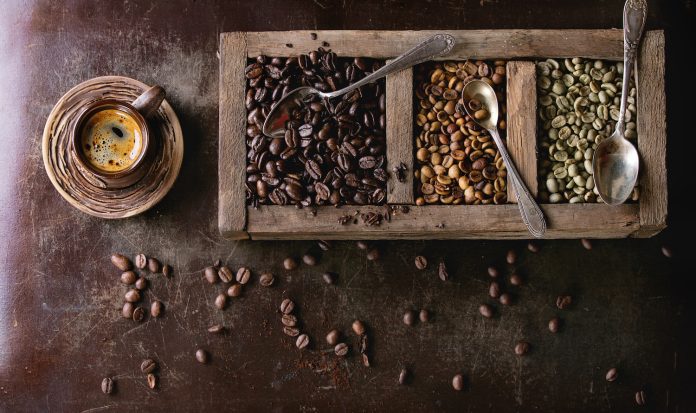Decaffeinated coffee, often simply known as decaf, offers the rich aroma and comforting warmth of coffee without the caffeine kick. But what goes into making a bean lose its buzz while retaining its soulful taste?
This article delves into the intricate world of decaf coffee, exploring the reasons behind its creation, the various methods used to remove caffeine, and how these processes affect the final cup. Join us as we uncover the fascinating journey from bean to decaf brew.
The Need for Decaf
Decaffeinated coffee is a haven for those who love the taste and experience of coffee but must avoid caffeine for health or personal reasons. This preference caters to a broad spectrum of consumers, from those sensitive to caffeine’s stimulatory effects to individuals aiming to decrease their intake for health considerations.
Decaf offers the pleasure of coffee’s deep flavours and cultural rituals without the risk of disrupting sleep patterns or exacerbating conditions such as anxiety or heart issues. The growing demand for decaf coffee underscores its role not merely as an alternative but as a staple in the diets of a significant segment of the coffee-drinking community, emphasising its value in the modern coffee culture.
The Basics of Decaffeination
One of the most commonly asked questions about coffee beans is “How is coffee decaffeinated?” The process of decaffeination strips away caffeine from coffee beans while striving to preserve the bean’s inherent flavours and aromas. This is achieved through various methods that carefully extract caffeine, a stimulant naturally present in coffee beans, without significantly altering the bean’s essential qualities.
Understanding decaffeination begins with recognising that caffeine, though a defining characteristic of coffee, can be selectively removed, allowing the bean to retain its beloved taste and aroma. This delicate balance between removing caffeine and maintaining flavour is fundamental to producing quality decaf coffee.
Decaffeination Methods
Decaffeination transforms coffee into a beverage that can be enjoyed any time of day, without the caffeine. The techniques used are diverse, each with its own approach to preserving the coffee bean’s flavour while removing caffeine.
- Swiss Water Process
This method is renowned for being completely chemical-free, using only water to decaffeinate coffee beans. It relies on osmosis and solubility principles to extract caffeine, ensuring that the beans’ natural flavours remain intact. The Swiss Water Process is highly favoured for its environmental friendliness and its ability to produce coffee that’s as close to its original state as possible.
- Carbon Dioxide Process
The Carbon Dioxide (CO2) Method utilises supercritical CO2 as a solvent to dissolve and extract caffeine from the coffee beans. This approach is praised for its efficiency and for minimising the impact on the bean’s intrinsic flavours. It’s a choice method for producing large quantities of decaf coffee while maintaining high quality.
- Direct Solvent Method
In the Direct Solvent Method, coffee beans are steamed and then rinsed with a solvent that targets caffeine. Once the caffeine is dissolved, the beans are steamed again to remove any residual solvent. This method is effective in caffeine extraction but requires careful handling to ensure that the solvent does not detract from the coffee’s natural taste profiles.
- Indirect Solvent Method
Similar to the Direct Solvent Method, the Indirect Solvent Method involves soaking the beans in hot water rather than applying the solvent directly. This process allows caffeine to be extracted into the water, which is then treated with a solvent to remove caffeine. The beans are reintroduced to the flavour-rich water, helping to preserve their original flavours. This method strikes a balance between effective decaffeination and flavour retention.
Each of these methods offers a different approach to decaffeination, catering to various preferences and priorities, from chemical-free processes to those prioritising efficiency and flavour preservation.
The Impact of Decaffeination on Taste
Decaffeination inevitably influences the taste profile of coffee, with each method leaving its own unique imprint on the final brew. While methods like the Swiss Water Process and Carbon Dioxide Process are celebrated for their ability to maintain the coffee bean’s natural flavours, subtle changes in taste and aroma are unavoidable.
These alterations can range from a slight decrease in bitterness to a more pronounced change in the bean’s flavour notes. Despite these variations, advancements in decaffeination technology have greatly improved the ability to retain the coffee’s original character, ensuring that decaf coffee can still satisfy the palate of even the most discerning coffee enthusiasts.
Benefits of Drinking Decaf Coffee
Decaf coffee offers several health and lifestyle benefits, making it an appealing choice for a wide range of individuals. For those sensitive to caffeine, decaf provides an opportunity to enjoy coffee without experiencing the jitteriness or sleep disturbances often associated with caffeine consumption. Furthermore, decaf coffee retains most of the antioxidants and nutrients found in regular coffee, contributing to overall health without the stimulant effects of caffeine.
It’s also an excellent option for those looking to reduce their caffeine intake for medical reasons, such as pregnancy or certain health conditions. By offering the rich flavour of coffee with minimal caffeine, decaf coffee allows everyone to partake in the ritual and pleasure of coffee drinking, regardless of their caffeine tolerance or health considerations.
















